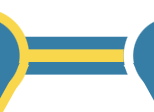

This document is an excerpt from the EUR-Lex website
EU strategy for the Adriatic and Ionian region
EU strategy for the Adriatic and Ionian region
EU strategy for the Adriatic and Ionian region
- Date of last review:
- 30/06/2015
- Author:
- Publications Office of the European Union
- Responsible entity(ies):
- Publications Office of the European Union
- Summarised document(s):
- Summary code:
-
-
02.07.05.00 Mediterranean Sea
- 26.08.01.00 Macro-regional strategies
-
02.07.05.00 Mediterranean Sea
- EUROVOC descriptor:
- Directory code:
EU strategy for the Adriatic and Ionian region
SUMMARY
The Adriatic and Ionian region is home to more than 70 million people. The proposed European Union strategy for the Adriatic and Ionian region (Eusair) seeks to build upon the cooperation that already exists between its eight countries - four EU countries (Croatia, Greece, Italy and Slovenia) and four non-EU countries (Albania, Bosnia and Herzegovina, Montenegro and Serbia) - which have a shared history and geography.
WHAT DOES THIS COMMUNICATION DO?
- It sets out the needs and potential for smart, sustainable and inclusive growth in the Adriatic and Ionian region.
- It urges these countries to work together on policy coordination and territorial cooperation.
- It seeks to improve the region’s attractiveness, competitiveness and connectivity, while protecting its environment and ensuring healthy and balanced marine and coastal ecosystems.
KEY POINTS
Common challenges
Historically, the region has faced difficult economic and political circumstances, as well as conflict. Challenges that it faces include:
- contrasting socioeconomic disparities between countries and regions;
- weak transport infrastructure and poor accessibility;
- inadequate interconnection of electricity grids and low investment in gas networks;
- increased human use threatening marine and coastal ecosystems (e.g. the pressure of tourism on waste water infrastructure);
- natural and man-made hazards and risks from climate change (e.g. more frequent forest fires);
- need for capacity building (i.e. developing skills, abilities, processes, etc.) in national, regional and local administrations and bodies.
Action plan
The strategy is accompanied by an action plan. It expands the maritime dimension to include the region’s hinterland and is structured around four interdependent pillars, as described below.
- Blue growth: to drive innovative maritime and marine growth by promoting sustainable economic development, jobs and business opportunities in the blue economy, including fisheries and aquaculture (i.e. fish-farming).
- Connecting the region: improving the connectivity of transport and energy networks.
- Environmental quality: cooperation to contribute to good environmental status for marine and coastal ecosystems, reducing marine pollution, mitigating and compensating soil sealing (i.e. the loss of soil resources due to the covering of land for housing, roads or other construction work), reducing air pollution and halting the loss of biodiversity and degradation of ecosystems.
- Sustainable tourism: developing the region’s potential in terms of innovative, sustainable, responsible quality tourism by diversifying tourism products and services, along with tackling seasonality.
Climate change mitigation (reducing the risks of climate change to human life and property) and adaptation, as well as disaster risk management, are also incorporated within each of these pillars.
In addition, two cross-cutting aspects are identified, as follows.
- Capacity building, including communication, for efficient implementation and for raising public awareness and support.
- Research and innovation to boost high-skilled employment, growth and competitiveness. Cooperation within transnational networks can bring ideas to markets and help develop new products and services.
BACKGROUND
Building on the experience from the EU strategies for the Baltic Sea region and for the Danube region, the European Commission adopted this communication, which is accompanied by an action plan. The strategy incorporates the maritime strategy for the Adriatic and Ionian Seas, adopted by the Commission on .
For more information, see:
- the Eusair website,
- the Baltic Sea region website,
- the Danube region website.
ACT
Communication from the Commission to the European Parliament, the Council, the European Economic and Social Committee and the Committee of the Regions concerning the European Union strategy for the Adriatic and Ionian region (COM(2014) 357 final of ).
last update






